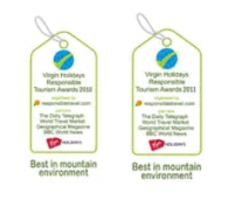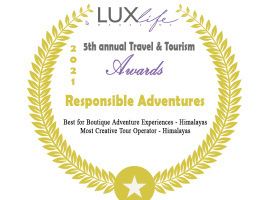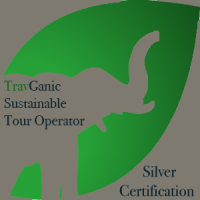Gokyo Lakes And Everest Base Camp Trek In Early Winter
Gokyo Lakes and Everest Base camp trek in early winter. 1st December – 20th December 2017
Chris and Tara did the Manaslu Circuit trek with us in December 2016 and had spoken about doing the Three high passes of Everest and a possible tour of Tibet the following year during the walk.
The planning of the trek.
Chris initiated the communication on the Everest trek’s three high passes and a tour of Tibet two months after getting home. We exchanged numerous ideas and itineraries via email over several months.
Ten weeks before the trek began, Chris faced a hiccup at work, one of his engineers resigned, and the project they were working on needed to be finished before the end of the year. Then, two weeks before the trek, Chris confirmed his worst fears – he couldn’t complete the project before the hike and had to pull out at the last moment. This left Tara to do the trek for which all her holiday time and flights had been finalised.
My team’s other worry was the early onset of cold weather from mid-October onwards – this would make the conditions on the high passes icy and potentially dangerous. However, we firmly believe in prevention rather than cure – I advised Tara on the potential risks of doing the high passes during December while also of the possibilities of meeting people who had done it while on the lodges and trail. Tara kindly agreed to follow our advice and stay on the safe side rather than risk injury and an early end to her holiday. So we decided to do the Gokyo Lakes and Everest base camp trek for safety measures.
Tara was met at the airport by me, brought to her hotel, and later that evening, we had dinner with our team of climbers who had just returned the day before from Lukla. This was Tara’s third trek with our company. The next day Tara had a free day to wander around and do things in Thamel while I had some chores to be handled. We agreed to meet the following day in the hotel lobby before going to the airport for our flight to Lukla.

Tara at Gokyo Ri 5364m
Lukla and Beyond.
At our agreed time, I met Tara and drove to the domestic terminal to catch our flight to Lukla. Everything seemed to be on schedule; our flight was announced, and we boarded the bus to take us to the aircraft. A few minutes later, the airline crew announced the delay in departure as the fog rolled on the runway, making visibility poor for planes to take off. Seventy minutes of uncertainty, then there was a flurry of activities at the airport grounds, and soon we were driven to our aircraft, boarded the plane, and were airborne after 15 minutes. We reached Lukla airport in 25 minutes, and as usual, there were many activities with aircraft landing and a rapid turnaround to return to Kathmandu. Our support crew consisting of Sundar and Dil met us at Lukla. We walked to our lodge to have some hot drinks. We decided to go further than our planned stop at Phakding; instead, we opted to go on for two more hours to Monjo’s village.
We stopped for lunch at Phakding and continued to Monjo. We got to our destination 5 hours after leaving Lukla. The temperatures had plummeted in just a short three days since I had gone to Lukla. The daughter-in-law had taken over the Monjo Guesthouse. She happened to be a former colleague of Sundar, and they had a great time catching up and speaking of their time working together.
Namche Bazaar 3441m
It was a blessing in disguise that we got to Monjo as this was a Saturday, and Namche had its weekly market. We would make it in time to witness this decades-old traditional market towards the end. We had a twenty-minute hike to the Sagarmatha National Park entrance, where registration takes place. Then, we proceeded towards Namche crossing the new high bridge (seven suspension bridges from Lukla to Namche). There is a steep ascent to Namche from the last bridge, which happens to be the highest. We arrived in Namche in time to see the remaining traders with their goods and wares. It had been more than a couple of decades since I had witnessed this traditional market. It brought back some memories. We stepped into a local eatery to have some dumplings for lunch before checking into our rooms at our lodge. The temperatures had plummeted – two degrees Celsius in the sun. We had an early dinner, discussed the next day’s program, and went to bed early.
Acclimatisation day at Namche
We went to Sagarmatha National Headquarters at the top of Namche for panoramic views of the surrounding peaks, including Mount Everest. We spent time there admiring the breathtaking views and taking photographs as usual. We visited the natural history museum and walked over to the privately-owned Sherpa museum, Sherpa culture photo gallery, and Everest documentation centre before returning to our lodge for lunch. We decided to watch a free documentary at the Liquid bar. They show free documentaries twice daily at 3 pm and 7.30 pm daily; the documentaries are usually related to Everest. The owner decided to put on Sherpa, the film on the avalanche that killed 16 Sherpas in 2014. It focuses on Phurba Tashi, the second person to climb Everest 21 times after Apa Sherpa. Phurba is also featured on Discovery Channel’s documentary – Everest, Beyond the limit. It was still an engaging experience despite watching it for the second time. We went back to the lodge for dinner and retired in preparation for the next day.
Thame village 3800m.
We started with a short climb after leaving our lodge to the West of Namche. It was another clear morning with stunning views. Thame’s walk is on a wide trail with undulating terrain with some short descends and ascends through open fields and pine forests. A big flock of Himalayan Tahr (Wild mountain goats) greeted us at Thamo village. They appeared unaffected by our presence and seemed just as fascinated by us as we were by them. We had lunch at Samde village and soon reached Thame within an hour. We walked to the school that had recently been rebuilt and reopened a few days before we arrived. Unfortunately, we soon learned that Thame village was severely affected by the 2015 earthquake- every house was damaged or destroyed. As a result, the trail to Thame was a lot less busy with trekkers; we only met six other trekkers going in the opposite direction. We stayed at the lodge owned by Apa Sherpa – the first person to reach Everest 21 times with numerous Guinness World Records. There was one other trekker in this lodge.
Khumjung village 3790 m
We retraced our steps back to Phurte village and branched off to climb towards Syangboche airstrip for lunch. This airstrip is used to fly in building materials to construct new lodges, shops, and homes from the nearby Phaplu airport. We continued uphill after lunch near the Yak farm and headed down to Khumjung village. The school built by Sir Edmund Hillary is at the Khumbila (Khumbu Yul Lha) entrance, the Khumbu’s protector deity, looming high above the valley consisting of Khunde and Khumjung village. We checked into our lodge and had a hot bucket shower. We had to do this as the cold water freezes during winter and breaks the pipes. Afterwards, we wandered around the village and visited the monastery holding a “Yeti scalp” in a glass box. We came back for an early dinner and retired soon after.
Dole 4010m
This morning the weather was cloudy, and we even saw a few specks of snow. We thought we might get the first winter snowfall. However, the weather improved.
We invited ourselves to the home of Phurba Tashi, one of the leading characters from Sherpafilm.com. Tara wasn’t sure where she had seen him before. Phurba was generous enough to offer us tea while answering our questions. We headed to our destination of Dole after this meeting. We made our way to the top of a small pass at Muang La before descending close to the Dudh Koshi River valley. We stopped for lunch at Phortse Tengka. We had a two-hour ascent through the pine forest with occasional views of Mount Cho Oyu – 8201m, the sixth highest peak in the world; the streams on the West side of this valley were mainly frozen as the sun went to the Westside fast on this narrow valley. I observed that there were a few new lodges at Dole. We shared the lodge with a German couple and their support crew. We had an early night, as usual.

Mount Cho Oyu 8201m is the 6th highest peak in the world, with Gokyo Lake
Machermo 4410m
The hike to Machermo starts with a short but steep climb but levels out to an undulating terrain after an hour. It is a short 3-4 hours to reach Machermo; most trekkers stop here to allow themselves time to acclimatise. We decided to prepare our special meal consisting of superfood and other beneficial ingredients for Tara that night as necessary to acclimatise our trekkers.
The Yeti.
Machermo is supposedly the last place a Sherpa lady in 1974 spotted a Yeti. When she saw yeti, she fainted, and when she came around, one of her yaks was killed and partially eaten.
Gokyo Lakes 4790 m
The hike to Gokyo Lake is just a short 3 hours from Machermo. It starts with a short climb, and the trail is undulating until we start climbing for about 45 minutes on what used to be a narrow and exposed trail. Now the path has been widened like in most places in the lower sections of this trek. We came across the first lake, a welcoming sight; it had its two resident Siberian ducks. A short walk later, we got to the bigger second lake, which also had its pair of Siberian ducks. The third and most significant lake is the most impressive and closest to the lodges/hotels’ settlement. We decided to go to Gokyo Ri 5364m after resting post-lunch at 2.30 pm. People typically go up this hill in the mornings, as the afternoons tend to be cloudy. However, it had been clear most of the time so far in December. We trekked uphill at a slow but steady pace; it was pretty windy at times; we could see people who had started before us up ahead. We got to the top in good time, 1 hour and 30 minutes after we started. Most people take 2 hours or more to reach the top. Our practice of providing superfood meals might have a significant role in this result. We don’t push our trekkers to prove our point; they move along in their comfort. We took several photos both as a group and individually for our memories before heading down to Gokyo. It took us an hour to get back, and we arrived just before it turned completely dark.

Gokyo Lake
Back to Dole and on to Phortse village.
We had half an additional day as we had ascended Gokyo Ri the previous afternoon. So we decided to use this to get to Phortse village for lunch and use the afternoon for a bucket shower and laundry.
We retraced our steps back to Dole with a stop for lunch before our final destination. The afternoon was spent playing a game Tara had brought for me three years ago but had never played herself until this trek. We played this game a few afternoons, and Tara learned that Nepalese are high-risk takers.
The trek to Phortse village took place after breakfast with a descent to the crossroads that brings one north to the village. We walked through the Rhododendron forest, where we saw a large female Himalayan Tahr near the village. We enjoyed the warmth of the sun away from the wind. We walked around the village fields, which are an abode for wildlife. We saw a couple of musk deer; I had never seen them climb trees to eat the lichens; I saw several female and male Impeyan pheasants – our national bird and Himalayan Tahr.
This village boasts the highest number of Everest summiteers, with every household having at least one, if not more, family members who have reached the top of Chomolungma.
An ultra-modern climbing wall and complex built here by The Khumbu Climbing Center (KCC) is funded by the Alex Lowe Charitable Foundation.
Pangboche Village 3985 m
Our trek towards Pangboche village started with an ascent on the valley’s west side. The trail is a series of ups and down on an exposed part of the hill, saying that the path is quite broad. It took us about 3 hours to reach Pangboche at a relaxed pace with lots of stops for photos, drinking water, and admiring the scenery. There were two other trekkers at the lodge we stayed in Pangboche; one left for Dingboche after lunch. We spent the afternoon doing laundry and playing ‘pass the pigs.’ It had become our favourite time pass on the afternoons when we got to camp early.
Amadablam Base Camp 4600 m
We hiked to Imja Khola (River) before our ascend to Amadablam base camp began. The first hour is pretty steep, and the gradient eases out for about 45 minutes, followed by a gradual and steep climb to base camp. We reached the base camp in just over 2 hours. In the past, it had taken my other trekkers about 3 hours to get here. We saw a flock of Tibetan snow cocks moving around quite noisily. It was interesting to see the base camp without anyone; just two before, there was a flurry of climbers’ activities going for the summit, coming down, and the various teams packing up to leave base camp after the climbing season. We climbed a little higher on the path climbers took to the summit. We could see the Mingbo airstrip, which Sir Edmund Hillary’s team had supplies airdropped for his mountaineering and scientific expedition in the fall of 1959. We hiked to the airport and walked towards a lodge to have our packed lunch. Then, we retraced our steps back to Pangboche in windy conditions.
Dingboche 4350 m
This was another short day of about a three-hour hike with an altitude gain of 400 meters. We hiked out of Pangboche village with great views of Mount Amadablam, Nuptse, and Lhotse. The approach to Somare village was going past numerous icy fields of frozen streams. The trail levels out after a short climb above Somare, going past a single lodge at Orsho before dropping down to Khumbu and Imja Rivers’ confluence. The trail ascends quite steeply for about twenty-five minutes, from where the gradient of the climb becomes gentler. We reached Dingboche 45 minutes from the confluence. We had lunch and went for a wander around the settlement. There are quite a few new lodges here. We made our special meal for Tara to give her a better chance of acclimatisation as we went to two places above 5000 meters and spent one night sleeping at 5180m.
Permanent Settlements
Pangboche is in the East, and Khumjung in the West was the last permanent settlement before Everest base camp and Gokyo – respectively. All the present places with lodges where trekkers stay used to be transit points for villagers when they took their animals for summer grazing and on their way back in autumn. Due to the tourist influx, they started temporary shelters, and when tourism developed, more prominent and more beautiful lodges were constructed. Some places have hostels with ensuite toilets, and some even provide electric blankets – luxury!
Lobuche 4980 m
We climbed a small hill above Dingboche for panoramic views of Mount Thamserku, Kangtega to the south, Amadablam, Makalu, Island peak, Choplu to the East, Lhotse, Nuptse to the north and Tawache, Cholatse to the south West. From this spot, the hike is undulating and a gentle climb for about 75 minutes before the trail drops down to the Khumbu River and a short climb to Thukla. Unfortunately, floods and a landslide had washed the old trail away; we had to walk on a new path for about 25 minutes before reaching Thukla. We stopped here for early lunch. After that, we just hung around, enjoying the sunshine sheltered from the chilly wind. Then, we trekked up the steep hill after a relaxed two-hour lunch break. The steady and steep climb brought us to the top of Thukla, where numerous memorials were built in memory of those who have fallen on Everest. The trail here is a gentle climb of about forty-five minutes to reach Lobuche. Once again, there were a few new lodges here. We stayed at the New EBC guesthouse, where the windows were double-glazed to make it warmer. We had another relaxed afternoon with a few ‘pass the pigs’ rounds before dinner and another early night.

On the way to Lobuche
Gorakshep 5180 m and Everest Base Camp 5250m
We started with our usual wake-up at 7 am with our special Ayurvedic drink to help our aching muscles and energise us for a good part of the day. We left at 8.30 am as usual after breakfast. The first forty-five minutes walk is the most gentle climb with some steep bits in between, and then there is a twenty-minute climb to a small pass. After that, the trail becomes undulating with a series of short steep ascends and descends. The path here has changed with the lateral glacier melting, and landslides and monsoon rains wash away the old route. It took us a little longer than expected by the new twisty and windy path to reach Gorakshep. Upon entering Gorakshep, we checked into our rooms and left unnecessary gear while waiting for our packed lunch to be made. We went to Everest Base camp with Sundar, volunteering to stay until our packed lunches were ready and catch up with us. The first part of the trail had changed again – erosion being the reason. Generally, it is a gentle gradient ascending most of the way to EBC. The trail drops a little before winding up to the “New Everest Base Camp.” The old base camp path was again made difficult by erosion caused by ice melt and monsoon rains. We reached base camp after 90 minutes of leaving Gorakshep. A big group of trekkers booked with a large International Adventure Travel company; we had crossed paths for three days. They were happily taking photos after photos. We decided to have our packed lunch to give them time to take pictures. They had brought Everest Beer to celebrate reaching Everest Base Camp. However, Tara observed that a couple left the beer cans at base camp – not the right thing to do. We finally got our chance to take photographs before retracing our steps back to Gorakshep. We had an early night as we planned to start our hike up to Kalapathar at 6 am the following morning.

Tara at Everest Base Camp
Kalapathar 5550 m and Pangboche 3985m.
We started our day at 6 am in icy conditions. I was wearing my base layers, microfleece, fleece, down jacket, and two pairs of gloves. The hike begins with a sandy field before a steep 25-minute walk up to a shoulder from where the climb is gentler for about 20 minutes, and the rise becomes a steady steep climb to the top. We enjoyed Mount Nuptse, Everest, Changtse, Khumbutse, Lingtren, and Pumori from the East, North, West, and south Cholatse, Tawache Thamserku, Kangtega, and Amadablam. The temperature must have been around -15 degrees Celsius, with the strong wind gusting from time to time. It was so cold that my fingers and thumb were hurting. I decided to stop using my trekking poles and warm my digits in my pocket; I advised Tara to do the same. It took my thumbs to warm up longer than my fingers. My thumbs were warm after rubbing them together to circulate the blood after 15 minutes. We saw a single person who had reached the top before us. It was the same person who started at 4.30 am for sunrise. We passed her on her way down when we were near the top. We reached the top after one hour and thirty-five minutes. The cold temperature and gusting wind made us take photos quickly and head down for breakfast. We had observed some trekkers coming behind us, but they had all turned back. On our descent, we passed a lone Polish trekker on his way up to Kalapathar; he was struggling with the cold wind; come to think of it, I wonder if he made it to the top. That morning, the lone lady and our team were the ones to reach Kalapathar, possibly a solo Polish trekker. We had our breakfast at Gorakshep and discussed the possibility of going further than our planned stayed at Pheriche and headed for Pangboche, a further 2 hours away.
We were surprised by the number of individuals and big groups of trekkers heading to Gorakshep on our way out. We had a very windy and dusty environment to trek on; we even had to stop to allow the dust storms to pass. There were dust and sand all over us. We reached Thukla for lunch after 5 hours of walking from 6 am. We hiked briskly down from Thukla and soon arrived at Pheriche in an hour with a constant headwind. I checked with Tara if she was all right to go all the way to Pangboche, and she nodded. We reached Pangboche 90 minutes after leaving Pheriche at 3.45 pm. We met a Dutch trekker and stayed at the same lodge at Machermo to Gokyo.
Namche 3441 m
This part of the trail was one Tara hadn’t walked on as we had made a small loop coming from Gokyo. The path started with a gentle descent down to the bridge over the Imja river from the trail levels until the final 30 minutes of ascending to Tengboche Monastery. We stopped long enough to admire the panoramic view from Tengboche and take a few photographs. We had a dusty descent for an hour before we reached Phunki Tenga. The trail ascends from Phunki Tenga to Kyangjuma. We stopped for lunch at Kyangjuma. We had a flattish terrain for an hour after lunch before reaching Namche Bazaar. It was like being back at Home Sweet Home with a lovely hot shower and great food.
Phakding 2650 m
This was a short day compared to the past three days, so we took our time and left Namche at 9.30 am downhill till we reached Dudh Koshi River an hour later. The trail was flattish for 45 minutes before a small climb up to Jorsalle, where we had to check out of Sagarmatha National Park. We hike for 90 minutes before stopping at the Waterfall Guesthouse for lunch. We reached Phakding a short one hour later. I had an old friend from Singapore and Kathmandu coming to Phakding from Kathmandu this day, and I wanted to meet him. We had exchanged messages on Facebook; coincidentally, his group’s lodge was just next to ours. We had a lovely short chat in the afternoon and again the following day before going our separate ways. The late afternoon and evening were spent watching Everest IMAX and a documentary on the Annapurna Base Camp trek before settling by a wood stove in the dining room for dinner and retiring for the night.
Lukla 2860 m
We retraced our steps towards Lukla on a combination of ascends and descended until Thado Koshi’s settlement, from where the trail was uphill for about 30 minutes. After that, the path is ‘level’ Nachipang until Chaurikhara, where a short steep of 20 minutes begins until the Pasang Lhamu Gate at Lukla. We had lunch at our lodge in Lukla, showered, and just chilled out during the afternoon before dinner. As usual, it was another early night, as we had an early start the following day.
Kathmandu
We woke up at 5.30 am to prepare breakfast before heading to the airport to return to Kathmandu. It was a windy morning, which caused the flight to be delayed by an hour. The return flight was quite turbulent due to the windy conditions. Upon reaching Kathmandu airport, we collected our luggage and dropped Tara off at her hotel. We met Tara for her birthday dinner and departed after agreeing to meet at 12.30 pm the following day for her departure.
International Departure.
We met in the hotel lobby as agreed before we bade farewell to each other until the next time before a vehicle took Tara to the airport to catch her flight back home.
















